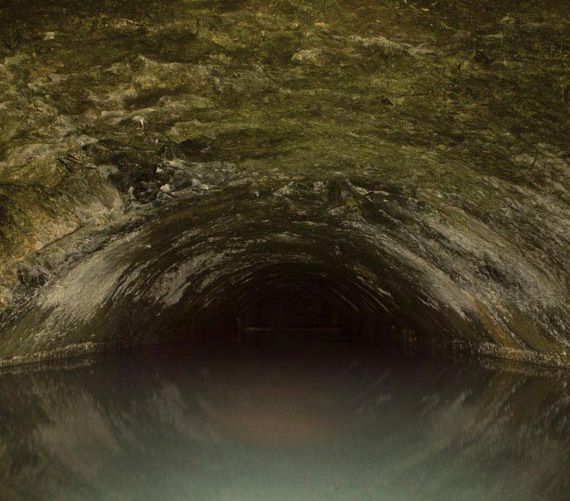
Four of the city's best-kept secrets emerge from the shadows and into the spotlight.
THE CISTERNS AT GILBERT CASTLE
Built by an Englishman by the name of John Hamlin Burnell back in 1870, this modest little castle with a Norman-style stone turret once sat alone on a grassy hill in what is now Hunters Point. Looking at it even then, one would have never known what lies beneath—two 200-foot aquifers that capture up to 10,000 gallons of pure spring water each day, supplying water for Burnell’s Albion Porter & Ale Brewery until it was shut down by Prohibition in 1919. The castle has since been home to the Albion Water Company, sculptor Adrian Voisin (in 1938), and Citysearch cofounder Eric Higgs (in 1998). In 2011, Albion was purchased for nearly $900,000 by Bill Gilbert—a fourth-generation San Franciscan and retired police lieutenant—who renamed it
Gilbert Castle. He plans to restore the castle to its glory days as a brewery.
NOURSE AUDITORIUM
For many who have walked the block of Hayes Street between Van Ness Avenue and Franklin Street, the Nourse Auditorium, built in 1927, remains a secret. Never mind that its intricate carved and tiled stucco exterior is a mammoth in plain view.
Its arched doorway opens to something far grander—a vast 1,800-seat auditorium with coffered ceilings and gilding galore. The Nourse was originally home to Commerce High School’s plays and assemblies. From the 1950s, the stage hosted cultural acts, including Allen Ginsberg and The Doors, until 1985 when it was converted into a courtroom—a new floor would forever bury the orchestra pit and seats. Since then, the only company the beaux-arts interior has seen is a bunch of boxes left in
storage by the San Francisco Unified School System. “Real necessity has turned into a real opportunity,” says Sydney Goldstein, the founder and director of City Arts & Lectures, which was looking for a new home in the face of Herbst Theatre’s impending
closure. Now, thanks to funds raised by Goldstein, that floor is being dismantled, and the beautiful old relic will be restored with first-rate seating, sound, lighting, and renewed purpose. Look for City & Arts and Lectures to share the stage with troupes such as Philharmonia Baroque and the Gay Men’s Chorus when the Nourse reopens in May 2013.
CHRISTIAN DIOR JUNO GOWN
(1949)
Any fashion lover worth her heels has seen an exhibit in the de Young Museum’s textiles and costume wing with nary a clue
to the sartorial mysteries hiding
behind the museum’s closed doors. Beyond the fashion library is a maze of rooms known as “conservation hallway.” Past that, the storage closet. Here, nondescript cabinets are kept under lock and key. There is nothing dull, though, about what’s inside—the museum’s permanent collection of vintage and antique clothing. This gem—Christian Dior’s 1949 couture Juno gown—was a gift from Grover A. Magnin. In Magnin’s letter to the de Young on Dec. 10, 1949, he predicted it would be, “a document for future generations, portraying the greatest talent and genius of the present era.” Juno last saw the light of day in the 2005 exhibit “Beauty, Power, and Prestige.”
ARION PRESS
“This place is awesome!” exclaimed a very refined SF art gallery director at a recent viewing of Arion Press, the little known Presidio publisher of limited-edition deluxe books, founded by Andrew Hoyem in 1974. Sharing the building with affiliate M&H Type—the oldest and largest letterpress type foundry in the country—Arion utilizes fonts cast in metal daily in the in-house foundry. Here you’ll find working vintage machines including Monotype, Thompson, and Giant casters, as well as countless boxes and drawers of metal plates, luscious paper stock, and the intricate illustrations of prominent commissioned artists. Arion publishes just a few books each year, all of them works of art. Editions include the 50-pound, 1,356-page Lectern Folio Bible (starting at $7,250) and Poetry of Sappho, with paintings by Julie Mehretu (starting at $1,750). Turns out, Arion is open to the public for 90-minute tours each Thursday. But we’d still be willing to bet you haven’t been there—yet.
This article was published in 7x7's June issue. Click here to subscribe.
Related Articles


